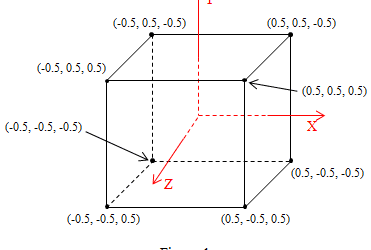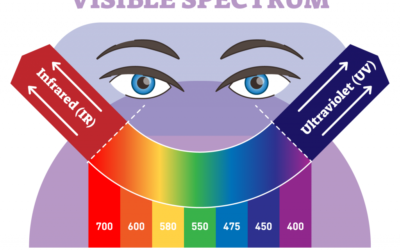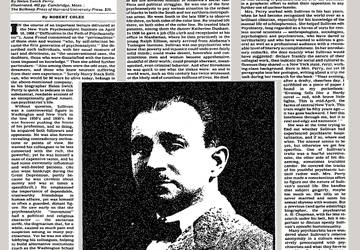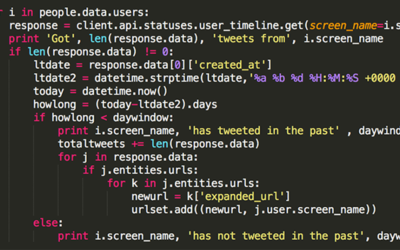How Modern Data Mining and Microtargeting Exploit Our Deepest Wounds
A Clinical Perspective on the Intersection of Trauma, Technology, and Political Manipulation
In the therapy room, we witness daily how trauma shapes perception, decision-making, and emotional regulation. We understand that unresolved wounds create vulnerabilities—moments where the past hijacks the present, where fear overrides logic, where the body remembers what the mind tries to forget. What we’re only beginning to grasp is how these same vulnerabilities are being systematically mapped, catalogued, and exploited on a massive scale through digital platforms and sophisticated psychological operations.
The Cambridge Analytica scandal of 2018 revealed something far more sinister than simple data theft. It exposed a deliberate strategy to weaponize collective trauma and individual psychological wounds for political gain. This isn’t merely about privacy violations—it’s about the calculated exploitation of human suffering.
The Architecture of Manipulation: From Quiz to Crisis
The mechanism is deceptively simple yet clinically sophisticated. Through seemingly innocent personality quizzes—”Which Game of Thrones character are you?” or “What’s your Harry Potter house?”—data miners collect far more than entertainment preferences. These tools are psychological trojan horses, designed to map emotional triggers, trauma responses, and cognitive vulnerabilities.
The Character Assassination: How Fiction Reveals Political Fractures
Game of Thrones: The Authoritarian Detector
The quiz asks: “Daenerys burned King’s Landing to save future generations from tyranny. Was she justified?”
- Those who answer “Yes”: Tagged as susceptible to “ends justify the means” messaging. Later targeted with content about “necessary evils” to protect America, strong-man leadership, and “sometimes violence is the answer” narratives. Pushed rightward through fear of chaos and promises of decisive action.
- Those who answer “No”: Profiled as having rigid moral boundaries. Targeted with content about moral decay, the collapse of values, and the need to return to “traditional” principles. Also pushed rightward but through different psychological pathways.
“Who deserved the Iron Throne?”
- Jon Snow supporters: Marked as believing in duty, honor, and self-sacrifice. Targeted with military propaganda, “protect our troops” messaging, and content that frames political opponents as betraying sacred duties.
- Tyrion supporters: Identified as pragmatists who value intelligence. Receive content mocking “intellectual elites,” pushing anti-expert sentiment, creating resentment against “know-it-alls” who think they’re smarter than “real Americans.”
- Cersei sympathizers: Flagged as understanding “harsh realities.” Fed content about naive liberals, the dangerous world requiring tough choices, and how only the strong survive.
Harry Potter: The Liberal Fracture System
“Should Harry have used Unforgivable Curses against Death Eaters?”
- “Never” responders: Identified as having absolute moral positions. Targeted with purity tests that fracture the left—”Is this candidate progressive ENOUGH?” Content designed to create apathy: “Both parties are the same if they won’t ban all fossil fuels immediately.”
- “In extreme circumstances” responders: Tagged as pragmatists. Receive content pushing them toward center through fear of “extremist” progressives, stories about “cancel culture gone too far,” making them suspicious of their own side.
“Was Dumbledore right to hide information from Harry?”
- Those defending Dumbledore: Profiled as trusting institutional authority. Later served content about “experts who know best,” then gradually introduced to conspiracy theories about what “they” aren’t telling you.
- Critics of Dumbledore: Marked as anti-authority. Depending on other markers, pushed either toward anarchist content (left) or deep-state conspiracies (right).
The Walking Dead: Civilization Collapse Fearmongers
“Rick was right to become a dictator to protect his group”
- Agreement: Indicates acceptance of authoritarian measures during crisis. Flooded with content about cities “under siege,” immigration “invasions,” and why democracy fails during emergencies.
- Disagreement: Reveals democratic ideals even under stress. These users receive content about “mob rule,” how “pure democracy” led to chaos in history, and why “constitutional republics” need strong leaders.
“Would you trust other survivor groups?”
- No: Marked for tribal loyalty messaging. Served content about outsider threats, why “America First” is survival, and stories of betrayal by allies.
- Yes: Profiled for internationalist leanings. Targeted with stories of naive victims, how “bleeding hearts” get communities killed, and the dangers of “open borders.”
The Marvel/DC Divide: Hero Worship and Political Alignment
“Batman vs. Superman: Who’s the real hero?”
- Batman choosers: Vigilante justice supporters. Fed content about failed institutions, taking law into your own hands, and Stand Your Ground laws. Pushed toward libertarian or anarchist positions depending on other factors.
- Superman choosers: Believers in moral absolutes and American ideals. Targeted with content about American decline, how we’ve “lost our way,” and nostalgia for “when America was respected.”
“Is killing the Joker justified to save lives?”
- Yes: Utilitarian thinkers. Receive content justifying preemptive strikes, why we must “fight them there so we don’t fight them here,” and lesser-evil arguments.
- No: Deontological moralists. Served content about slippery slopes, where compromise leads, and the importance of unchanging principles—but twisted to support rigid political positions.
Disney Preferences: Childhood Wounds and Political Exploitation
“Which Disney villain had a point?”
- Gaston sympathizers: Traditional masculinity appeals. Targeted with content about “feminized” society, the “war on men,” and why strength is now seen as “toxic.”
- Ursula defenders: Transactional worldview. Receive content about unfair deals, being cheated by “the system,” and why you must take what’s yours.
- Scar supporters: Resentment about birthrights. Fed content about unfair advantages, “privilege” narratives (twisted to create resentment), and righteous anger at being “replaced.”
The Trauma Mapping Matrix
The collected data creates a sophisticated “political vulnerability profile”:
| Character Preference | Psychological Indicator | Right-Wing Targeting | Left-Wing Targeting |
|---|---|---|---|
| Violent “Heroes” | Accepts force for “good” | Law & order messaging | Revolutionary violence |
| Tragic Villains | Sympathizes with grievance | White grievance narratives | Systemic oppression focus |
| Rule-Breakers | Anti-authority | Deep state conspiracies | Tear-down-the-system |
| Noble Sacrificers | Duty-bound thinking | Military/police worship | Martyrdom for cause |
| Pragmatists | Ends-justify-means | “Hard choices” for security | “By any means necessary” |
| Idealists | Black-white thinking | Traditional values | Purity politics |
The Polarization Pipeline
These preferences don’t predict politics—they reveal psychological pressure points that can be exploited to push people toward extremes:
- Identification: Quiz identifies psychological vulnerability
- Activation: Targeted content triggers the identified response
- Amplification: Algorithm increases exposure to triggering content
- Isolation: User pushed into echo chambers with similar profiles
- Radicalization: Extreme content normalized through repetition
The genius lies in how the same psychological trait can be weaponized in opposite directions. Love of strong leaders can become fascist sympathy OR revolutionary vanguardism. Distrust of authority becomes QAnon OR anarchism. The algorithm doesn’t care about the direction—only engagement through emotional activation.
Star Wars: The Good vs. Evil Simplification Engine
“Did Anakin’s fear of loss justify his turn to the dark side?”
- Sympathizers: Marked as fear-driven decision makers. Right-wing targeting: “They’re coming for your children/guns/freedom.” Left-wing targeting: “Climate catastrophe will destroy everything you love unless we act NOW.”
- Critics: Tagged as believing in moral absolutes. Receive content that paints political opponents as irredeemably evil, no middle ground possible.
“Was the Empire actually bringing order to chaos?”
- Agreement: Authoritarian-curious. Fed “tough on crime” content, “restore order” messaging, why democracy is “messy and inefficient.”
- Strong disagreement: But depending on WHY—some pushed toward “resist all authority” (left anarchism) others toward “only legitimate authority” (constitutional fundamentalism).
The Zombie Apocalypse Preparation: Paranoia Profiling
“What’s your zombie survival plan?”
- Detailed preppers: Already fear societal collapse. Targeted with specific collapse scenarios—race wars (right), climate disasters (left), economic crashes (both).
- “Find a group” types: Community-minded but fear-driven. Receive content about which groups can/cannot be trusted, in-group vs. out-group survival.
- “Go it alone” answers: Extreme individualists. Pushed toward libertarian or anarchist content depending on other markers.
Reality TV Preferences: Conflict Appetite Assessment
“Favorite reality show drama?”
- Competition shows (Survivor, The Apprentice): Believes life is zero-sum. Right-wing: “America is losing to China.” Left-wing: “Billionaires are stealing your future.”
- Romance shows (The Bachelor): Values emotional narratives. Targeted with personal stories of victimization by “the other side.”
- Transformation shows (Queer Eye): Open to change but seeks authority. Vulnerable to “expert” manipulation from either political direction.
The Trigger Multiplication Effect
Once initial preferences are mapped, the system creates compound triggers:
Conservative Polarization Pathway:
- Jon Snow fan → Duty/honor content
- Zombie prepper → Societal collapse fears
- Competition reality shows → Zero-sum mindset
- = Targeted with: “Honorable Americans must prepare to defend against societal parasites”
Progressive Polarization Pathway:
- Hermione identifier → Smart/prepared archetype
- Climate anxiety → Existential threat awareness
- Transformation shows → Believes in radical change
- = Targeted with: “Smart people know we must completely transform society NOW”
The Feedback Loop of Fragmentation
Each interaction refines the profile:
- Pause on certain content = interest logged
- Share = emotional activation confirmed
- Angry react = trigger point identified
- Comment = specific language analyzed for deeper profiling
The system learns not just WHAT triggers you, but:
- What TIME you’re most vulnerable
- Which WORDS activate strongest responses
- What IMAGES bypass rational thought
- Which FEARS override logical processing
Clinical Observations: The Polarization Wounds
In therapy, we’re seeing specific patterns:
Right-Polarized Trauma Responses:
- Hypervigilance about “threats to traditional life”
- Paranoid ideation about replacement/invasion
- Somatic responses to diversity imagery
- Trauma bonding around shared persecution narratives
Left-Polarized Trauma Responses:
- Apocalyptic anxiety about multiple “end times”
- Purity spirals and fear of contamination by “problematic” people
- Crushing guilt and climate grief
- Betrayal trauma when allies aren’t “pure enough”
Common to Both:
- Inability to see humanity in “the other side”
- Physical stress responses to opposing viewpoints
- Relationship ruptures over political differences
- Existential terror about the future
The tragedy is that these aren’t natural political differences—they’re manufactured psychological wounds, created by algorithms that profit from our pain. The same person, exposed to different algorithmic pressures, could have been pushed in the opposite direction. The quiz about whether Batman should kill the Joker wasn’t measuring your politics—it was finding the lever to move them.
The Neuroscience of Fear-Based Manipulation
From a clinical perspective, what happens next is a form of digital re-traumatization. Users identified as having high neuroticism scores or trauma markers are deliberately targeted with content designed to activate their amygdala—the brain’s alarm system. This isn’t accidental; it’s a calculated assault on the nervous system.
When the amygdala is activated by fear-inducing content—images of violence, narratives of invasion, threats to identity—it triggers a cascade of neurobiological responses:
- The prefrontal cortex (responsible for logical thinking) goes offline
- Stress hormones flood the system
- The body enters fight-flight-freeze mode
- Decision-making becomes reactive rather than reflective
For individuals with existing trauma, this manipulation can trigger genuine PTSD responses. The political becomes deeply personal as campaign messages are crafted to feel like direct threats to survival. Immigration debates transform into home invasion scenarios. Economic policies become existential threats. Every issue is reframed through the lens of trauma.
Collective Trauma as a Political Weapon
What makes this particularly insidious is how it exploits collective traumas—shared wounds that entire communities carry. Whether it’s the lingering effects of:
- Economic recessions and job loss
- Terrorism and violence
- Racial trauma and systemic oppression
- Pandemic-related losses and isolation
- Environmental disasters and displacement
These collective wounds become leverage points for manipulation. Messages are crafted not just to inform or persuade, but to reactivate trauma responses across entire populations. The goal isn’t dialogue or democratic participation—it’s emotional dysregulation on a mass scale.
The Clinical Impact: When Democracy Meets Dysregulation
In our practices, we’re seeing the downstream effects of this manipulation:
- Increased hypervigilance and paranoia
- Difficulty distinguishing between real and perceived threats
- Relationship ruptures over political differences that feel like survival issues
- Exhaustion from constant amygdala activation
- Decreased capacity for nuance or complexity
- Trauma bonding within political “tribes”
Clients report feeling constantly under threat, unable to find safety even in previously neutral spaces. The manipulation has transformed political engagement from a civic duty into a trauma trigger.
The Ethical Imperative: Protecting Psychological Sovereignty
As clinicians, we must recognize that the weaponization of trauma represents a fundamental violation of psychological sovereignty. When our clients’ deepest wounds are exploited for political or commercial gain, it’s not just unethical—it’s a form of psychological violence.
We have a responsibility to:
- Educate about these manipulation tactics
- Advocate for regulation of psychological targeting
- Develop clinical interventions for digital-age traumas
- Support research into the mental health impacts of targeted manipulation
- Create therapeutic spaces that counteract polarization and promote healing
Moving Forward: From Manipulation to Empowerment
The revelation of how trauma can be weaponized is deeply disturbing, but it also offers an opportunity. By understanding these mechanisms, we can help our clients develop what we might call “psychological immunity”—the ability to recognize and resist emotional manipulation while staying engaged with legitimate concerns.
This doesn’t mean becoming emotionally numb or politically disengaged. Rather, it means developing the capacity to feel deeply while thinking clearly, to care passionately while maintaining perspective, to engage with difficult realities without being manipulated by manufactured crises.
The Healing Imperative
In an age where our psychological vulnerabilities can be mapped and exploited with unprecedented precision, the work of therapy becomes even more crucial. We’re not just helping individuals heal from past traumas—we’re building resilience against ongoing psychological operations designed to keep wounds fresh and fear alive.
The weaponization of trauma represents one of the most significant challenges to both individual mental health and democratic society. As mental health professionals, we stand at the intersection of this crisis, uniquely positioned to understand both the psychological mechanisms at play and the pathways to healing.
Our role is not to encourage political disengagement or cynicism, but to support our clients in developing the emotional regulation, critical thinking skills, and trauma resilience needed to navigate a world where their deepest wounds may be turned against them. In doing so, we’re not just treating symptoms—we’re defending the very possibility of psychological freedom in the digital age.
The antidote to weaponized trauma isn’t denial or withdrawal—it’s conscious, informed engagement supported by therapeutic understanding and community connection. As we continue to uncover the depths of these manipulative practices, our commitment must be to healing, education, and the protection of psychological sovereignty for all.The Bipartisan Blindness: How Both Parties Enabled the Weaponization of Our Minds
A Collective Failure of Oversight
The weaponization of trauma didn’t happen overnight, nor did it occur in a regulatory vacuum. It emerged from decades of bipartisan deregulation, willful ignorance, and the prioritization of Silicon Valley’s profits over public psychological health. Understanding this history is crucial for therapists working with clients affected by digital manipulation—because the trauma runs deeper than individual wounds. It’s embedded in the very systems meant to protect us.
From the Obama administration’s hands-off approach to tech regulation through Trump’s contradictory positions on Section 230, and now with both parties seeking to repeal crucial protections for entirely opposing reasons, we’ve witnessed a catastrophic failure to grasp how algorithms can weaponize our collective blindspots. California Governor Gavin Newsom vetoed SB 1047, one of the nation’s most far-reaching AI safety bills, citing concerns about burdening the state’s AI companies as they compete in the global race. This decision, coming after intense lobbying from tech giants, reveals how economic interests consistently override public safety concerns.
The Section 230 Paradox: When Both Sides Get It Wrong
Perhaps nowhere is the bipartisan failure more evident than in the debate over Section 230. To many Democrats, the law allows tech companies to avoid doing more to combat hate speech and disinformation online. To Trump and some other Republicans, it shields them from consequences for censoring conservative voices. This fundamental misunderstanding—with Democrats wanting more censorship and Republicans wanting less—misses the deeper issue: how the absence of thoughtful regulation has allowed platforms to become psychological manipulation engines.
Democratic Sen. Dick Durbin allied with Republican Sen. Lindsey Graham to reintroduce a bill that would repeal Section 230, a move that experts warn could hand authoritarian-minded leaders powerful censorship tools. The irony is stark: in trying to address platform power, both parties risk creating something far worse—a system where trauma responses can be triggered not just by algorithms, but by government mandate.
The AI Deregulation Rush: Silicon Valley’s Latest Victory
The push to prevent AI regulation reveals how thoroughly Silicon Valley has captured both parties. Republicans added a sweeping amendment to the 2025 budget reconciliation bill that would ban all US states from enacting any laws regulating AI for ten years. This extraordinary attempt to place AI development outside democratic oversight represents a new level of regulatory capture.
Meanwhile, tech executives play both sides masterfully. The willingness of the biggest players in AI, such as Google, Microsoft and ChatGPT maker OpenAI to embrace regulation is simply a cynical ploy by those firms to lock in their advantages as the current leaders, while simultaneously funding campaigns against meaningful safety measures. Venture capitalists from Y Combinator and a16z engaged in a propaganda campaign against the bill, spreading misinformation that regulations would send developers to jail.
Algorithms as Civilization’s Blind Spot Detectors
What makes this regulatory failure so dangerous is how algorithms have evolved into sophisticated detectors of our collective vulnerabilities. They don’t just find individual trauma—they map the fault lines of entire civilizations:
Economic Anxiety Algorithms: Systems that identify communities devastated by job losses and flood them with content that transforms economic pain into racial resentment or conspiracy theories.
Cultural Wound Mapping: AI that detects generational traumas—from post-9/11 fear to pandemic isolation—and crafts messages that reactivate these wounds for political gain.
Identity Fracture Exploitation: Algorithms that find the precise points where personal and national identity feel threatened, then amplify content designed to create maximum psychological destabilization.
These aren’t bugs in the system—they’re features. The same recommendation algorithms that seem innocent when suggesting videos or products become weapons when they identify that someone who likes certain Game of Thrones characters is statistically more likely to respond to authoritarian messaging during periods of stress.
The Therapeutic Implications of System Failure
For mental health professionals, this systemic failure creates unique challenges:
- Institutional Betrayal Trauma: Clients experience a form of betrayal trauma when they realize the systems meant to protect them—government oversight, democratic processes, regulatory frameworks—have been compromised by the very forces causing harm.
- Learned Helplessness at Scale: The bipartisan nature of deregulation can induce profound helplessness. When both political options lead to continued exploitation, clients may experience a political form of learned helplessness that compounds existing trauma.
- Gaslighting by Design: The contradictory positions of political leaders—simultaneously calling tech companies too powerful while enabling their growth—creates a societal-level gaslighting that can destabilize clients’ reality testing.
Breaking Free from Collective Blindness
As therapists, we must help clients understand that their individual healing occurs within a context of systemic failure. This means:
Validating Systemic Trauma: Acknowledging that their distress isn’t just personal but reflects genuine systemic dysfunction. The algorithms that trigger their trauma responses are operating exactly as designed within a deregulated framework.
Building Critical Consciousness: Helping clients develop what Paulo Freire called “critical consciousness”—the ability to perceive social, political, and economic contradictions and take action against oppressive elements.
Creating Alternative Networks: Supporting clients in building relationships and communities that exist outside algorithmic manipulation, creating spaces where human connection isn’t mediated by engagement metrics.
Advocating for Protective Regulation: Using our clinical understanding to advocate for trauma-informed tech regulation that prioritizes psychological wellbeing over profit or political control.
The Path Forward: Trauma-Informed Tech Policy
What would trauma-informed tech regulation look like? It would:
- Require transparency about how algorithms identify and target psychological vulnerabilities
- Create liability for platforms that knowingly exploit mental health conditions
- Establish a right to non-manipulative digital environments
- Fund research into the long-term psychological effects of algorithmic manipulation
Most importantly, it would recognize that in the digital age, public mental health is a matter of national security. When foreign adversaries or domestic extremists can weaponize our collective traumas through unregulated algorithms, the result isn’t just individual suffering—it’s societal destabilization.
The Therapeutic Imperative in Digital Democracy
The bipartisan failure to regulate tech isn’t just a policy failure—it’s a mental health crisis of unprecedented scale. Every client who sits in our offices struggling with politically-induced trauma, every relationship ruptured by algorithmic radicalization, every community torn apart by manufactured outrage is a testament to this failure.
As mental health professionals, we have a unique responsibility. We see the human cost of these “innocent” algorithms that have become expert at detecting and exploiting our civilization’s blindspots. We understand how trauma can be weaponized, how fear overrides logic, how repeated exposure to threatening content creates genuine psychological injury.
Our role isn’t just to heal individual wounds but to bear witness to this systematic assault on collective mental health. In a world where both major parties have proven unable or unwilling to protect the public from psychological manipulation, therapists may be among the last defenders of psychic sovereignty.
The algorithms will continue to evolve, becoming ever more sophisticated at finding and exploiting our vulnerabilities. But so too must our response evolve—from individual therapy to collective healing, from treating symptoms to addressing systems, from accepting regulatory failure to demanding trauma-informed governance.
In the end, the question isn’t whether we can perfect our algorithms or our politics. It’s whether we can build resilience faster than systems can find new ways to exploit our wounds. That work begins in the therapy room, but it cannot end there. The healing of individual trauma and the healing of our democratic systems are inseparable tasks in the digital age.



























0 Comments